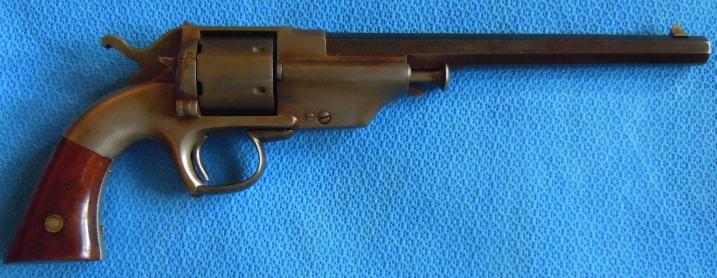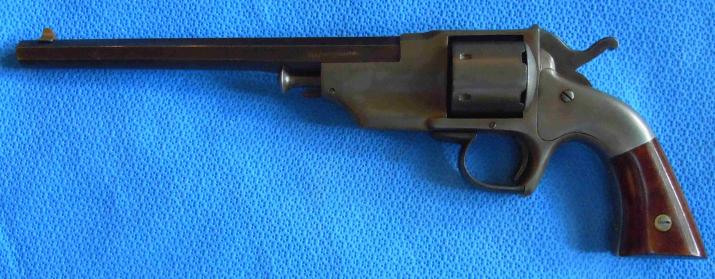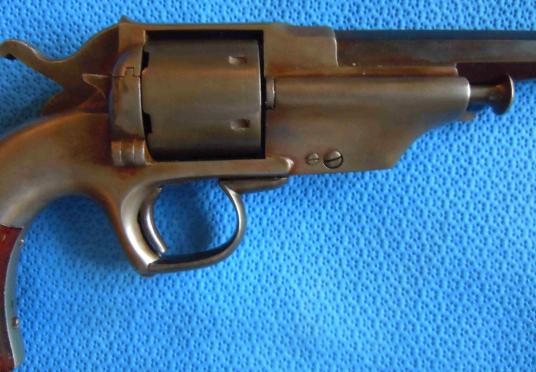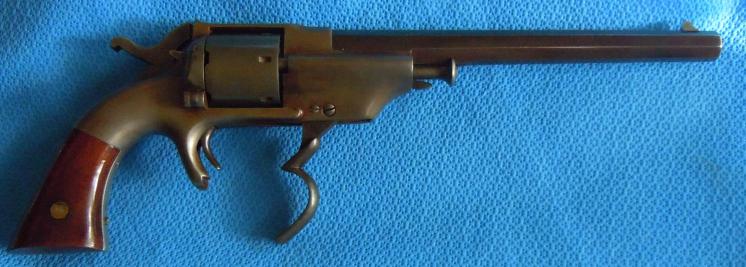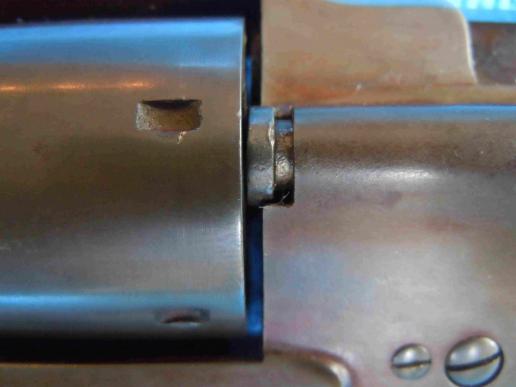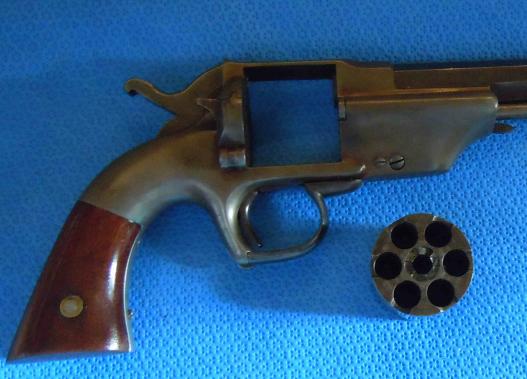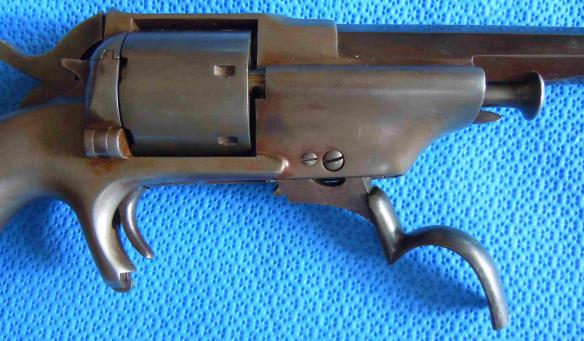Ultra rare Allen & Wheelock 8
In H H Thomas book The Story of Allen & Wheelock Firearms he states that their lip fire revolvers are rarer than Colt Dragoons and Colt Pattersons. I wouldnt disagree with him as I have sold three Colt Dragoons in recent times, three Webley Fosberys and a host of other scarce and interesting guns but never an Allen & Wheelock lip fire Navy Revolver. I have seen odd examples but never with an 8" barrel and usually they have been converted to fire rimfire cartridges.
This revolver is regarded by most collectors as a martial arm as there is evidence it was used during the American Civil War and, although no government contract can be found it is known that the Government bought them on the open market.
This particular example is in exceptional condition. The finish has mellowed to an even patina and other than some very minor scuffs it is as manufactured with a tight action and with original varnish on the grips.
The manufacture of these extraordinary revolvers was short lived because of the patent infringement litigation commenced by Smith and Wesson against Allen and Wheelock. It is interesting to note that this revolver, which used a metallic cartridge, was developed and sold before Allen and Wheelocks martial percussion revolvers and had it not have been for the patent litigation could have been very popular and made in larger quantities. It is estimated that no more than 250 of the first type and 500 of the second type were made and survival rates are low. A significant reason that there are so few surviving lip fire revolvers is that on the expiration of the Rollin White patent, which opened the market to rear loaded cylinders, many were machined to remove a fraction from the rear of the cylinder to allow the more common rim fire cartridges to be used which were cheaper than lip fire cartridges. I will explain this in further detail later. Examples of lip fire cartridges are rare, there are photographs in some specialist books and I will gladly send images to the purchaser.
The unloading rammer or ejector rod is a work of engineering genius. It is released with a latch on the trigger guard as it forms part of the guard and then fall down and outwards whilst simultaneously moving the ejector rod outwards to benefit from an internal screw and ratchet to enhance pressure. It is difficult to articulate how this works but it is very clever and of great interest.
When Allen & Wheelock ceased manufacturing these revolvers to produce percussion muzzle loading revolvers, this same extraction system was utilised as the rammer.
That this is a rare revolver cannot be doubted particularly in its outstanding condition. What makes it rarer is that the 8 barrel is not listed in Flaydermans Guide to Antique American Arms although Flayderman has the usual caveats that not all variations have been recorded. What is highly interesting about this piece is that the Worcester Mass address and patent dates are missing and in fact on examination with an electron microscope were never there. This leads me to believe that the manufacture preceded the patent and litigation and was no doubt one of the pre-production prototypes that was not issued which would explain the condition which is untouched. Had the revolver been issued after the Rollin White patent had expired it would have probably been machined as explained below. The makers name Allen and Wheelock is clearly stamped on the left hand side of the barrel and there is a serial number on the reverse of the cylinder where it should be but nothing else. It is straight forward to conclude from the lack of definitive information in both Thomas and Flayderman that this is one rare revolver!
Ethan Allen was granted a patent in September 1861 for his .44 calibre lip fire revolver. As this is more than a year since his patent on the lip fire cartridge, it is possible that lip fire revolvers were produced in late 1860 or early 1861. As many incomplete revolvers and parts would have been in existence at the time of the 'cease and desist' court order from the patent infringement in 1863, this inventory was kept and these revolvers were reintroduced when the White patent expired in 1869 until the parts stocks were depleted. All of the Allen and Wheelock lip fire revolvers were single-action. Many of the lip fire weapons were converted to rim fire with the simple machining/removal of just a small amount on the rear face of the cylinder as supplies of the ill-fated lip fire cartridge dwindled. While it is not known for certain, some of these conversions may have occurred at the factory, especially for those assembled in or after 1869. Others were converted by any number of gunsmiths around the country. It should be noted that the Army model was the first 'large bore' (more than .40 calibre) cartridge revolver, and remained so until the Remington cartridge conversions of the model 1858 appeared in 1868 - soon followed by the cartridge-designed Smith & Wesson Model 3 in 1869. Similarly, the Navy model was the only .36 calibre cartridge revolver until the similar conversion of Colt models 1851, 1861 & 1862 following the expiry of the Rollin White patent.
Allen and Wheelock were prolific and innovative makers of quality and it would be difficult to form a complete collection. This revolver would be the pinnacle of any Allen and Wheelock collection.
Code: 50442
5000.00 GBP

